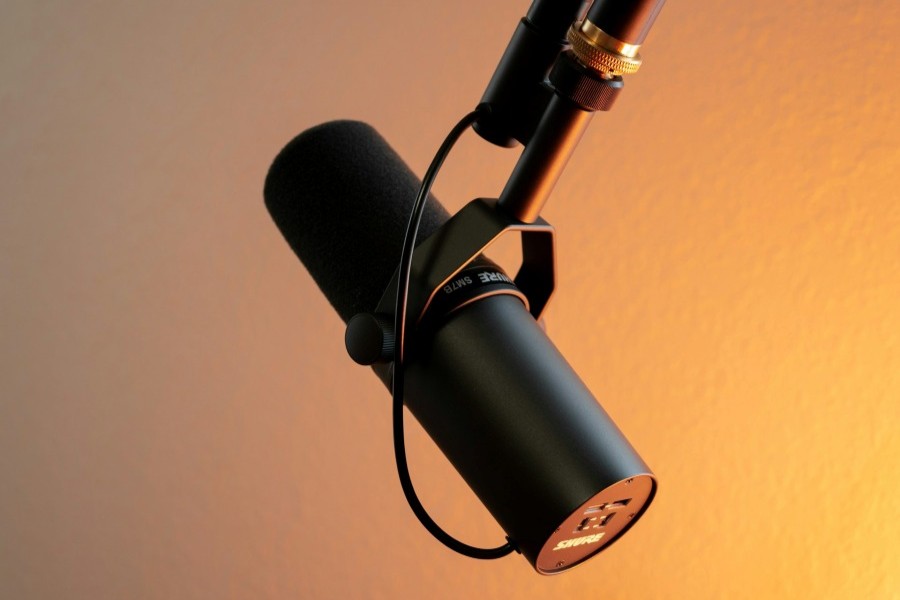- Google penalties are ways for the search engine to stop what it considers ‘bad’ website behavior in the form of algorithmic or manual penalties.
- Actions that cause these penalties include spam links, keyword stuffing, and backlink farming.
- You can keep your website safe from manual or algorithmic penalties by keeping the content clear and providing helpful or valuable content for the reader.
- If you find that you’ve been penalized, form an action plan of updates, fixes, and cleanups.
—————————————————————————————————–
Since its inception, Google has had the same goal: to help searchers find exactly what they’re looking for as easily and quickly as possible. The better its search results, the more people will use Google to search for things. However, since the beginning of online search, people have tried to game the system, using tricks and tactics that put their website ahead of “better” websites.
To combat this, Google has introduced strategies to punish website owners that aren’t playing by the rules or are using “black hat” search engine optimization (SEO) strategies to boost their rankings. These are known as Google penalties. If you think you’ve been hit by a penalty or want to ensure that your SEO work is “safe” from penalties, this guide is for you.
What are Google penalties?
As mentioned, Google penalties are ways for Google to stop what it sees as “bad” website behavior and punish those trying to exploit its search algorithm. There are different types of Google penalties: algorithmic penalties and manual penalties.
Algorithmic penalties
Google regularly updates its algorithm to remove possible exploits, either increasing the value it places on certain website aspects (high-quality content, well-labeled images, ease of navigation) or deprecating others (duplicate content, keyword stuffing, spam links). If you get hit by an algorithmic penalty, you won’t be informed, but if you watch your search metrics, you could see significant declines in both rankings and visitors, with consequent impacts on conversions or sales.
One example is its Penguin update, which was called the “Webspam Algorithm Update” by Google. It was first introduced in 2012 and is still ongoing today. The update was necessary because Google’s original patented algorithm, PageRank, was based on the concept that the higher quality and more authoritative a web page, the more other pages would reference it through links. However, “black hat” SEO operators figured out that they could create thousands of meaningless backlinks, entire directories of them, and it would have roughly the same effect.
Penguin was introduced to determine the quality of the link’s origin, meaning poor quality links got less value and were even manually punished. Upon introduction, this update affected 12% of English language search queries and completely wiped out the “backlink farming” method of SEO. If your website at the time, or even now, were found to be using these methods, you would have seen a significant drop in your rankings, think from page 2 to page 20, and traffic overnight. So naturally, this caused major panic among website owners and SEO providers (though not the ones who’d been playing fair all the time).
Manual penalties
In this case, a real person from Google’s search quality team has looked at your site and found it to be committing indiscretions. They then take a “manual action” and put a strike against your site. If you’ve been given a manual action, “some or all of that site will not be shown in Google search results.” Since Google lets every webmaster know about potential issues, in their eyes, there’s no reason why your website should be committing these SEO sins.
In terms of undoing the damage of Google penalties, manual actions are tougher to come back from than algorithmic ones. For this reason, it’s best to try and completely avoid them in the first place. So let’s look at what activities trigger penalties and how your site can recover from one.
What actions cause Google penalties?
As we’ve discussed, there are a couple of different types of Google penalties you can be hit by, each with its own triggers.
Algorithmic penalties
These are automatic and occur when the algorithm changes its values and recalculates your position, and you can check these yourself on Google’s developer’s page. We also keep an updated list on our own blog. However, the simplest explanation for avoiding algorithmic Google penalties is to “build great content.” Here are some tips:
- Keep the content clear (e.g., avoid long, rambling sentences that are words for the sake of words)
- Make sure it’s related to the subject (e.g., if your site is about car parts, don’t write reviews of TV shows and put in a plug for timing belts at the end)
- Deliver value for a visitor (if they’ve come to your page, make it worth their while)
- Make it easy to use (e.g., responsive for mobile users, easy navigation through menus)
It can be tough to keep up with all the changes, but a quick online search or chat with your digital marketing agency can help you find what algorithm changes will have caused a sudden drop in rankings and traffic.
Manual penalties
These happen when one of Google’s staff members has reviewed your website due to it being flagged for practices going against their quality guidelines. Google will inform you if a manual action has been taken against your site in the Manual Actions section in “Security and Manual Actions” in the Google Search Console.
Manual Google penalties are tougher to remedy and often cause some or all of your site to be removed from Google’s search results, but at least they have clear guidelines about what you shouldn’t be doing. Manual actions can be for:
- Site abused with third-party spam (e.g., people using comments sections to put up spam links or content that have little or no relevance to your site)
- User-generated spam (e.g., spam detected on user profiles, forums or guestbook pages)
- Spam-free host (if you are a host and many of the sites hosted are low-quality spam sites)
- Structured data issue (where actual content on pages is different from the structured data offered to Google)
- Unnatural links to your site
Source: Ahrefs
- Unnatural links from your site
- Thin content with little or no added value
- Cloaking and/or sneaky redirects (e.g., showing Google different pages than users or redirecting them to different pages)
- Pure spam (e.g., automatically generated gibberish or simply taking content from other sites and posting it to yours)
- Cloaked images (showing different images to Google than to your visitors, such as an image hidden behind a block of text)
- Hidden text and/or keyword stuffing (e.g., text that could be the same color as the page, so invisible to the human eye but seen by Google’s robots or content that has specific words included far more often than would be natural)
Source: Cyberclick
- AMP content mismatch (for Accelerated Mobile Pages (AMP) the version shown to the mobile user should be roughly the same as the canonical desktop version)
- Sneaky mobile redirects (redirecting mobile users to unrelated content or showing ads not shown to Google)
- News and Discover policy violations (specific to breaking rules for Google News and/or Discover)
How can you fix a Google penalty?
If a Google penalty has hit you and your traffic has suffered, you will want at least to return to where you used to be. But how you recover from a penalty will depend on which type it was.
The good news with an algorithmic penalty is that you didn’t necessarily do anything wrong; the new algorithm simply values things other websites have over yours. There are a few ways you can go about addressing the fallout from this, including:
- Find out what (likely) happened: After a major algorithm change, it’s likely that marketers will be writing about it. Google will have announced the change but not necessarily what was changed (apart from a rough indication like “decreasing spam”). Read up and see if all your pages were affected (making it a site-wide issue that could point to technical SEO problems) or only some of them (which might make it easier to spot the issue.)
- Study the opposition: If you’ve been knocked off the first few pages, manually go through some of the sites that sit there now. Try to figure out what they’re doing that you’re not. It might be more content, or it could be less content that’s hyper-targeted. Watching what the sites at the top are doing is a good start to finding your own path to number 1.
- Form an action plan: Once you have a reasonable idea of why you’ve fallen foul of the algorithm, it’s time to assess what damage has been done and how it can be reverted. Depending on the issues causing the Google penalty, it can take anywhere from a few days to a few weeks to fix. One handy start is to get a spreadsheet, list the potential issues, and have the responsible team go through your affected pages to see which boxes they tick. After that, assign out the remedying changes and start getting back to where you belong.
- Wait: You might be anxious to start fixing everything immediately, and your business may also depend on it, but waiting is a very valid response. After all of Google’s algorithm changes, they issue a “refresh” after a week or two to adjust for “false positives” and remove penalties that might not have applied to your site. In any case, you may still be working out what needs to be done, so holding off for a couple of weeks on any major changes is no great harm (i.e., things are unlikely to get worse, but they may get better).
For manual penalties, the process is similar, except you will be told very clearly what you’ve been doing wrong. However, you definitely don’t have the luxury of waiting as you will be unfindable on Google until you resolve the issues. Here’s how the recovery process works:
- The Manual action report you receive from Google will outline what the offenses were and which of your pages are affected (though it could also be your whole site)
Source: Serpstat
- You must fix ALL the issues on EVERY page affected. Google won’t allow a partial return of some pages while you wait to update the others.
- When this has been done, you can request a review. This is a formal request sent to the Google team asking them to look at your site again.
- In the request, you should clearly state the issue or issues your site had, detail everything you’ve done to remove the issue, and include the outcomes of your efforts. For example, the issue might have been that several of your pages were copy-pasted from other sites, so in your request, you will state how you went about identifying any duplicate content on your page, and how all of the discovered duplicate material was removed and replaced with fresh, relevant, and original content
Penalized? We can help
Google penalties on your website, either algorithmic or manual, can lead to your site tumbling down the search rankings or getting removed from them completely. This will naturally lead to a big drop in traffic and conversions. It’s always best to try and avoid Google penalties by sticking to Google’s best practice guidelines but sometimes, especially for algorithmic penalties, there might be little you could have done.
Fortunately, however bad the penalties are, there are always solutions to help you recover. If you handle all of these yourself, it’ll involve putting a comprehensive plan together to identify and resolve the issues causing the penalties. However, if an outside agency is handling your SEO, they can handle much of the heavy lifting for you.
At Redefine, we’re proud that our clients have yet to deal with manual Google penalties while we’ve been handling their content and SEO, though dealing with algorithmic changes is a constant fact of life. That’s not to say we’re unfamiliar with manual penalties, as a few of our clients have come to us with penalties from previous agencies’ work.
Whether you’re suffering from a manual penalty or an algorithmic one, we can help you recover. Contact us today.





